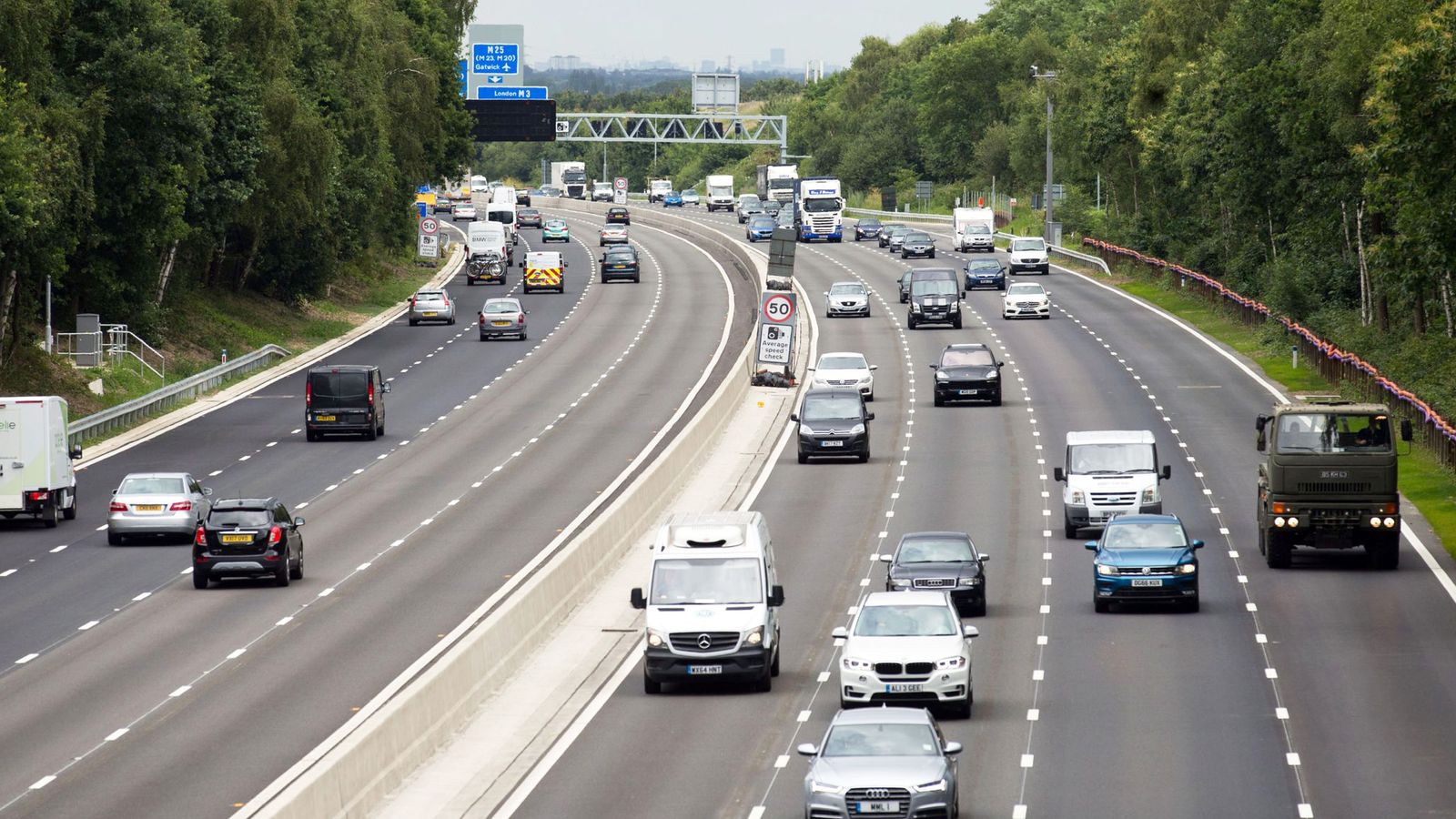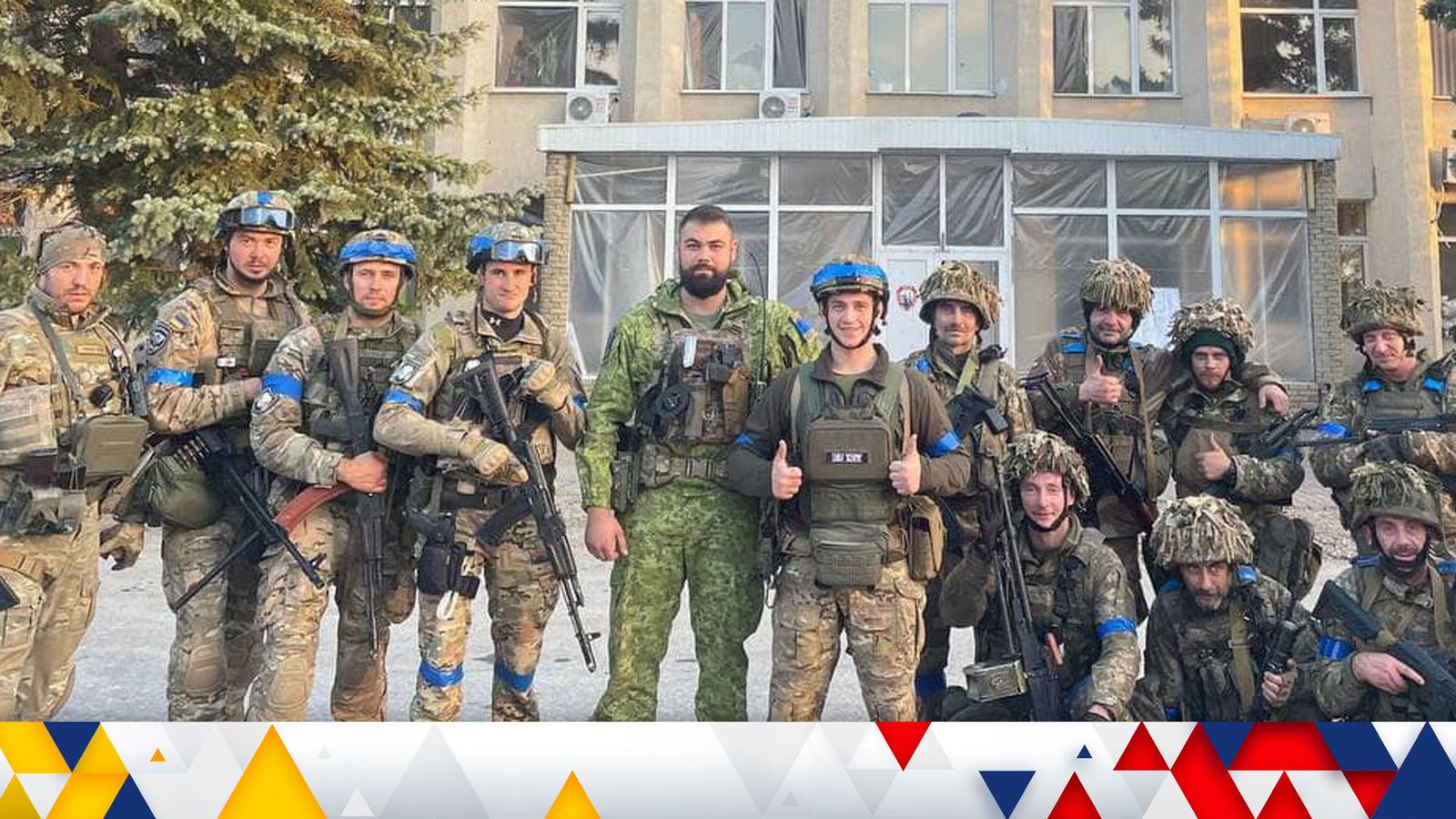A fourth target to boost the safety of smart motorways has been missed, according to National Highways.
The government-owned company admitted it failed to achieve a 10-minute response time target for reaching stopped vehicles by the end of September.
Three other targets were reached within the deadline, including the retrofitting of stopped vehicle detection (SVD) technology to all smart motorways without a hard shoulder.
It also completed the installation of additional signs showing the distance to the next emergency stopping area and upgraded all enforcement cameras to enable detection of closed lane violations.
National Highways chief executive Nick Harris said: “Clearly this is not the end of our work, and we will continue to deliver further improvements to help ensure people feel safe and confident when using our roads.
“This includes plans to install additional emergency areas.”
Read more:
Smart motorways: What are they and why are they being shelved?
Cost of living: ‘Significant risk’ of UK gas supply emergency, energy regulator warns
Politics live: Chancellor Kwasi Kwarteng ‘has to go’ in wake of ‘massive’ U-turn on 45p tax rate; ‘end of days feel’ to Tory conference
Truss and Kwarteng U-turn on plan for 45p tax rate for highest earners
Smart motorways involve various methods to manage the flow of traffic, such as converting a hard shoulder into a live running lane.
This is known as all lane running (ALR), which is used by National Highways to boost capacity in a cheaper way than widening roads.
But major safety concerns have been raised following fatal incidents involving vehicles stopped in traffic being hit from behind.
Then-transport secretary Grant Shapps published an “action plan” in March 2020 which set out a series of new safety measures.
National Highways’ second year progress report in May stated that four of those would be in place by the end of September.
Which targets were met?
SVD technology is designed to detect a stopped vehicle in a live lane in around 20 seconds through radar units monitoring motorway traffic in both directions.
An alert is sent to a control room operator who can view the incident on a camera, activate lane closure signs on gantries, and despatch personnel.
More than 700 additional signs were installed by the end of last month, so drivers will almost always be able to see the distance to the next emergency stopping place.
A commitment to upgrade 95 cameras which enforce red X lane closure signs – used when a vehicle is stopped in a live lane – by the same deadline was also met.
The upgrade means the cameras give police the ability to issue £100 fines to drivers who ignore the signs without catching them in the act.
How was the response time target missed?
National Highways initially committed to reducing the average time it takes to reach vehicles stopped in live lanes, where emergency areas are more than one mile apart, from 17 minutes in 2020 to 10 minutes by July 2021.
After failing to accomplish that goal, it said in May that “we expect to achieve our aim to meet the 10-minute average response time by the end of September 2022”.
But figures for August – the most recent available – show the average response time was 10 minutes and 29 seconds.
National Highways figures show an annual average of nine people were killed or seriously injured in crashes involving stopped vehicles on ALR smart motorways between 2016 and 2020, at a rate of 0.19 victims per hundred million vehicle miles.
On conventional motorways, the rate was 0.09.










